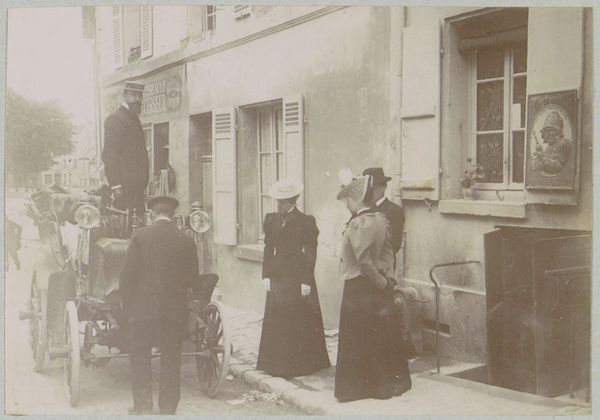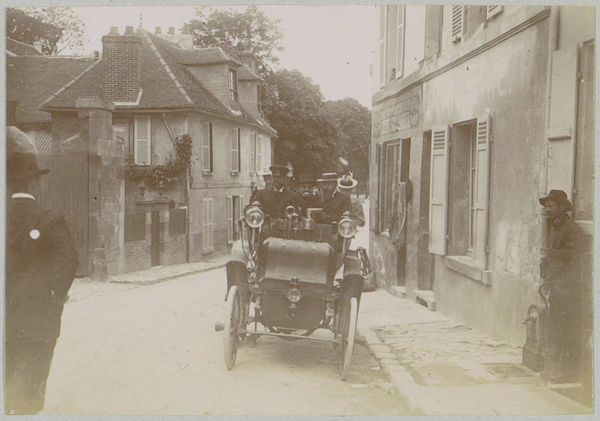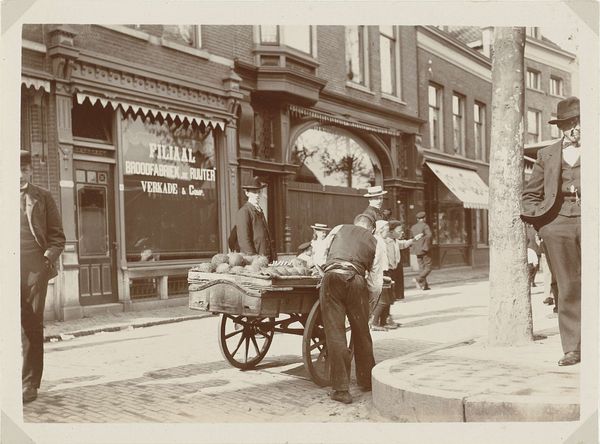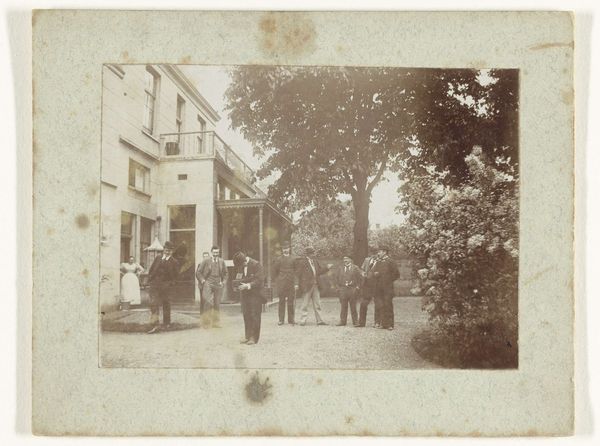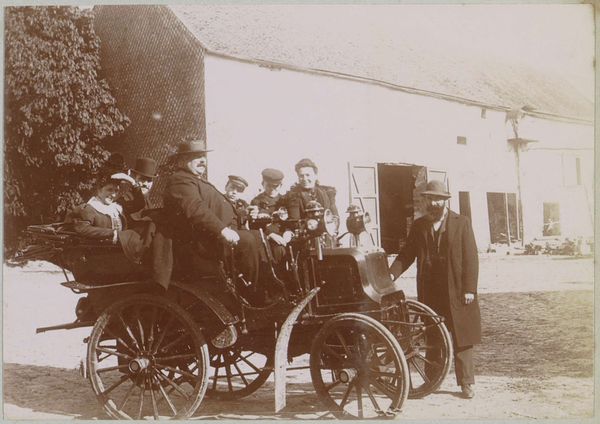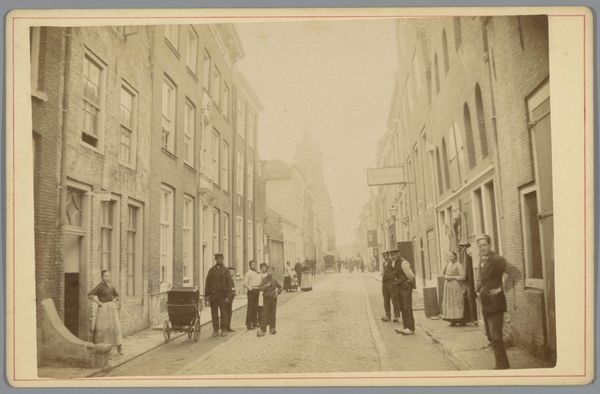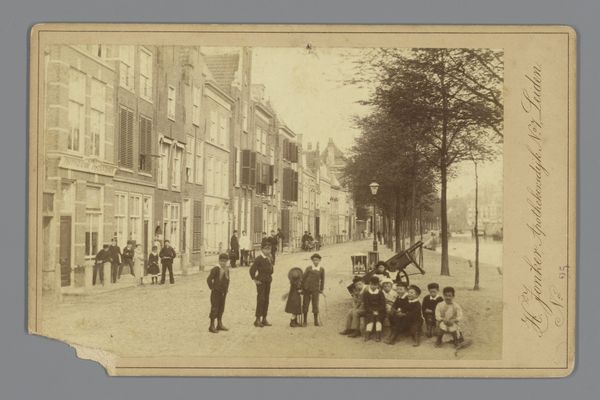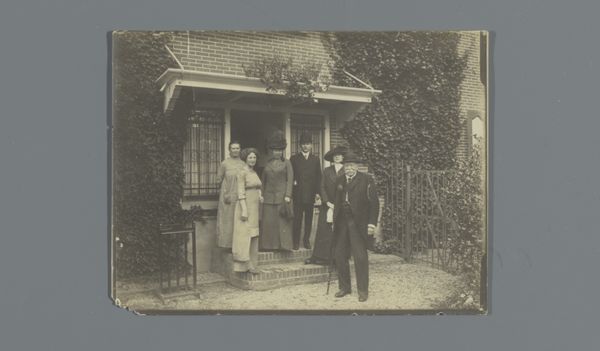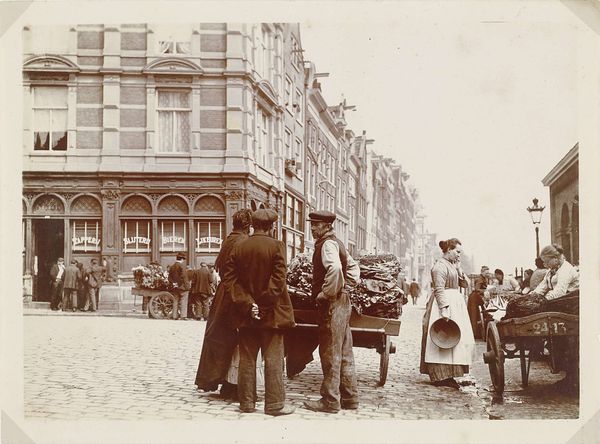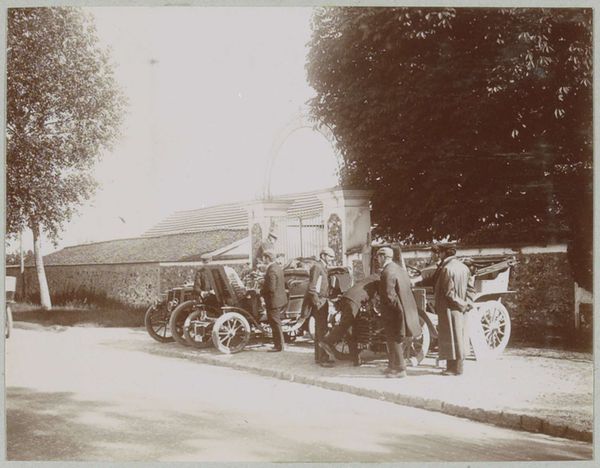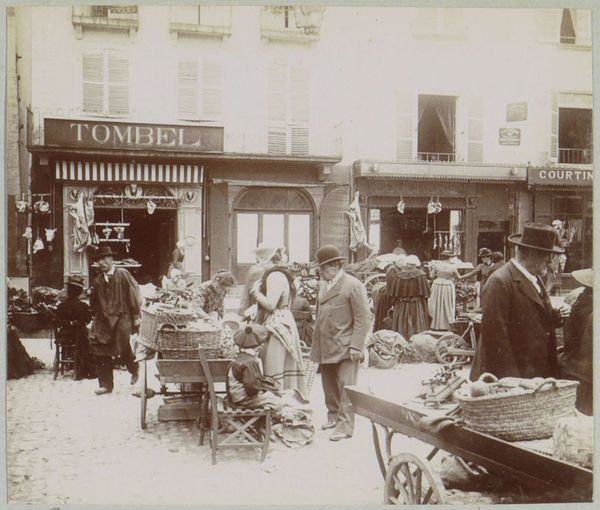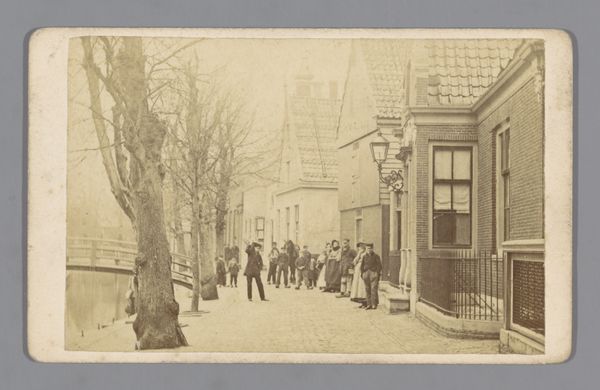
Dimensions: height 59 mm, width 84 mm
Copyright: Rijks Museum: Open Domain
Editor: This photograph, "Gezelschap bij een automobiel op straat in L'Isle-Adam," from 1898, captures a scene of people gathered around an automobile. It's a sepia-toned print, giving it a distinctly vintage feel. It seems to capture a moment of both fascination and potential breakdown in the early age of cars. What can you tell me about it? Curator: From a materialist perspective, let's consider the impact of this new technology - the automobile - on the social landscape of L'Isle-Adam. The photograph itself, as a mass-reproducible image, democratized access to such scenes. What's interesting here is to analyze the labor involved, from the manufacturing of the car to the production of the photographic print. Think about the materials themselves: the steel and rubber of the automobile, the paper and chemicals of the photograph. These elements reveal a society in transition, consuming new goods at an accelerating rate. What do you notice about the relationship between the people and this new commodity? Editor: Well, their posture suggests a certain degree of curiosity and even…uncertainty. Almost like the car has broken down and everyone's scratching their heads figuring it out! It feels less like a celebration of progress and more a portrait of people contending with new technologies. Curator: Precisely. And who had access to such technology at this time? Consider the social implications. Cars were luxury items. Photography, while becoming more accessible, still required a certain level of disposable income. The scene captures a particular social strata encountering the promises and challenges of technological advancement. Also, consider the context; the transition of manufacturing processes happening in Europe. Editor: So, seeing it this way really highlights not just what's in the photograph, but the social and economic processes that allowed it to be made in the first place. Curator: Absolutely. By examining the materials and production, we move beyond aesthetic appreciation and towards a deeper understanding of its historical and cultural context. Editor: This makes me realize how much a seemingly simple photograph can tell us about the bigger picture of society at that time. Curator: Indeed, it reminds us to look beyond the surface and analyze the complex web of material conditions that shape our world.
Comments
No comments
Be the first to comment and join the conversation on the ultimate creative platform.
